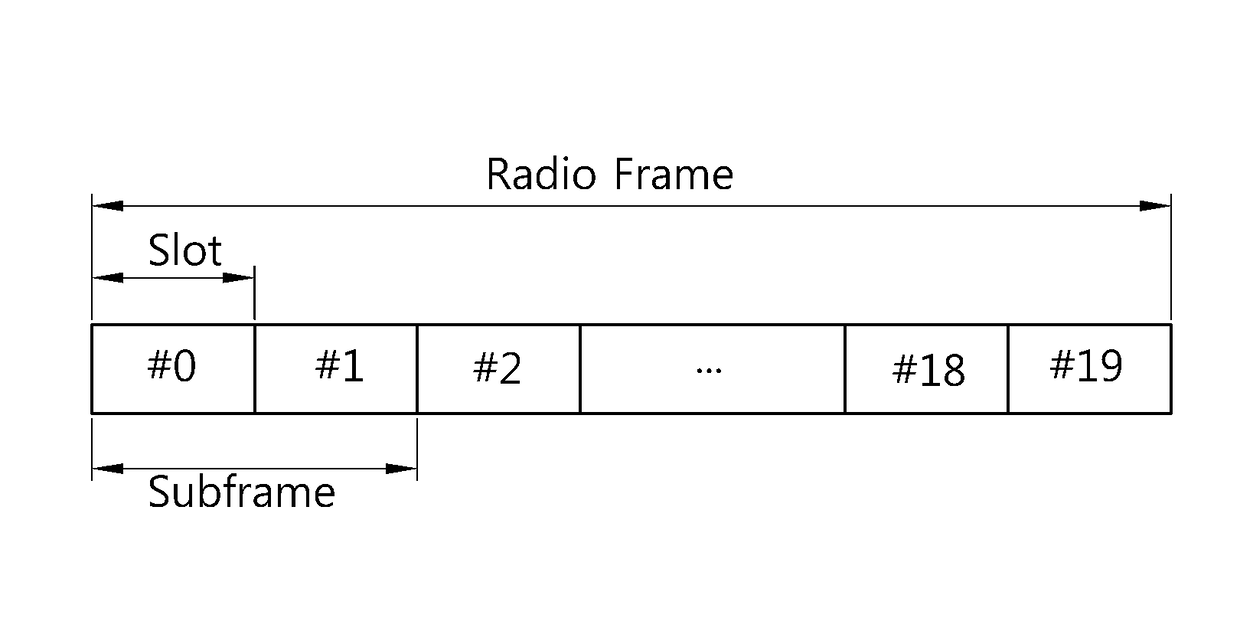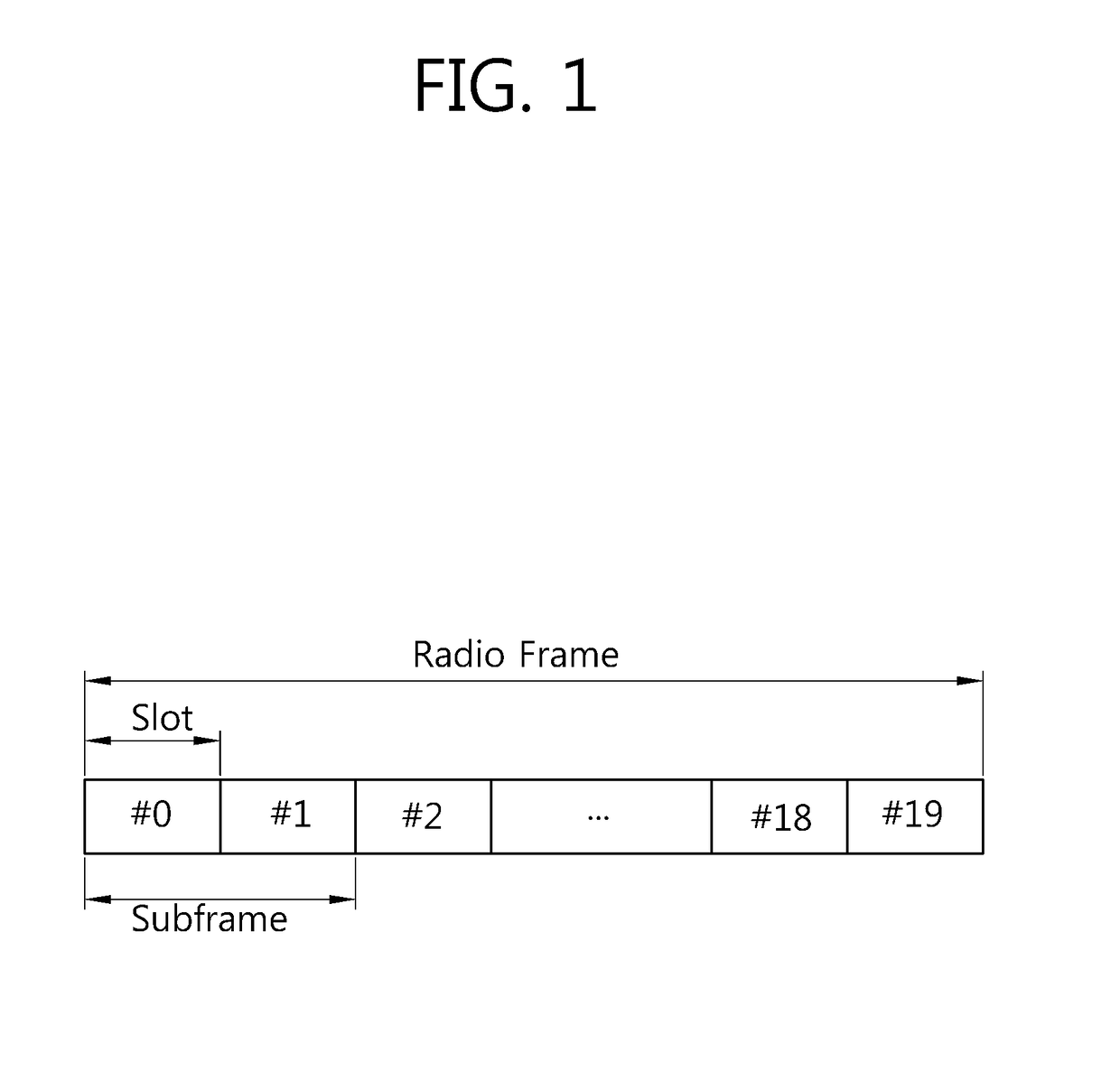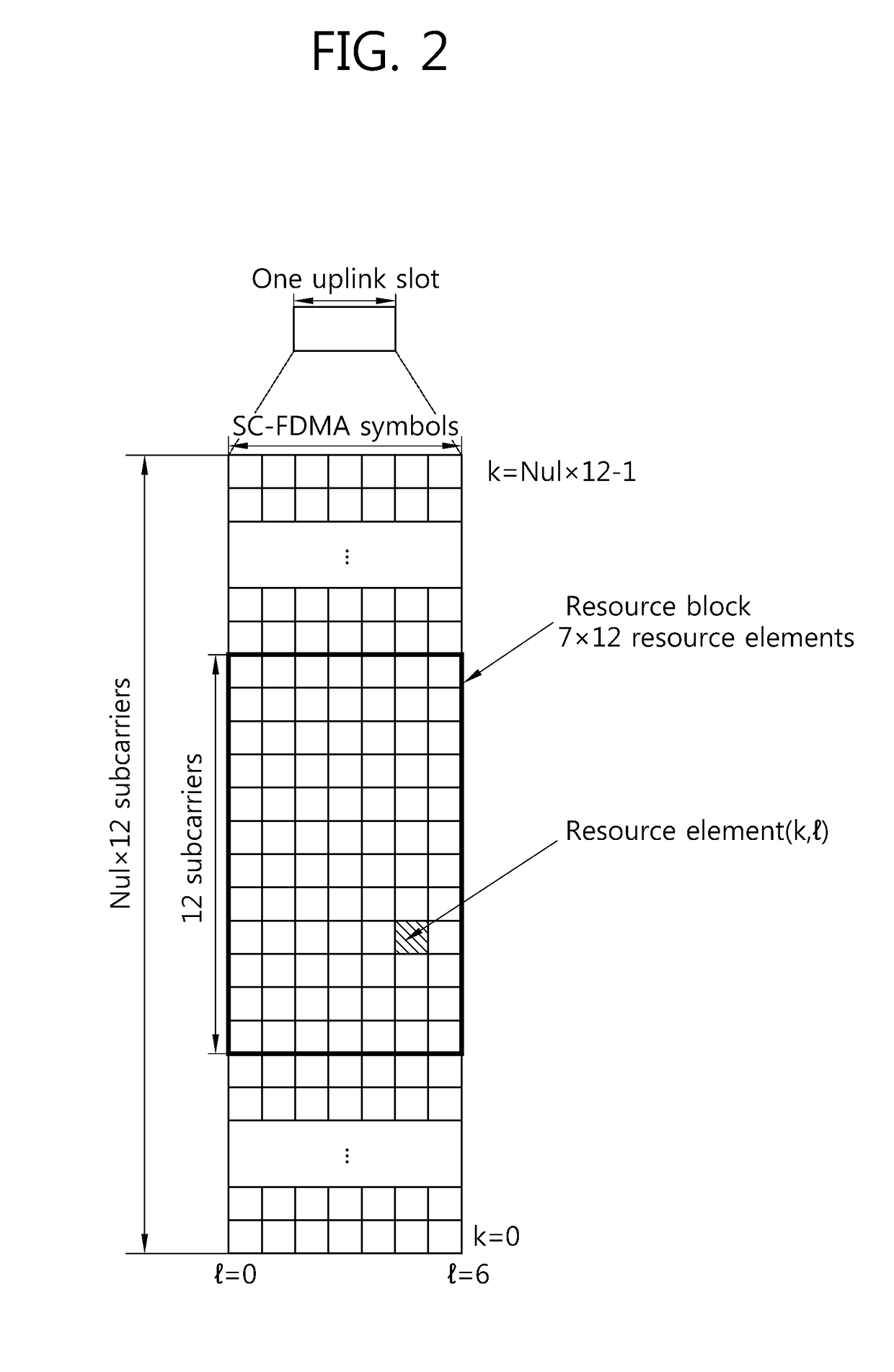Method for arranging frame structure of flexible short tti according to change in control region, and device using same
a technology of flexible short tti and control region, applied in the field of wireless communication, can solve the problems of unsuitable low latency requirements for tti length of 1 ms, and achieve the effect of reducing the overhead generated in a control signal and a reference signal with the introduction of stti, reducing the effect of user equipmen
- Summary
- Abstract
- Description
- Claims
- Application Information
AI Technical Summary
Benefits of technology
Problems solved by technology
Method used
Image
Examples
embodiment 1
[0103]FIG. 7 shows an embodiment of a case where a 1st sTTI has a length of 5 OFDM symbols.
[0104]FIG. 7(a) shows a case where a control region has a length of 1 OFDM symbol in a state where the length of the 1st sTTI is fixed to the 5 OFDM symbols. FIG. 7(b) shows a case where a control region has a length of 2 OFDM symbols. FIG. 7(b) shows a case where a control region has a length of 3 OFDM symbols.
[0105]An sPDCCH in the 1st sTTI is included in a control region 710 of the existing TTI, and sPDCCHs of the 2nd sTTI to the 4th sTTI are included respectively in special symbols 711, 712, and 713. In each sTTI, the sPDCCH schedules resources 720, 721, 722, and 723 of the sPDSCH. Scheduling is indicated by each arrow in the figure. Herein, the control region 710 of the existing TTI is allocated across the entire bandwidth of a frequency bandwidth. This is because the existing UEs cannot recognize the control region if the control region 710 of the existing TTI is limited to a specific fr...
embodiment 2
[0114]FIG. 8 shows an embodiment of a case where a 1st sTTI has a length of 4 OFDM symbols.
[0115]FIG. 8(a) shows a case where a control region has a length of 1 OFDM symbol in a state where the length of the 1st sTTI is fixed to the 4 OFDM symbols. FIG. 8(b) shows a case where a control region has a length of 2 OFDM symbols. FIG. 8(b) shows a case where a control region has a length of 3 OFDM symbols.
[0116]In FIG. 8(a), if a control region 810 of the existing TTI is 1 OFDM symbol, the 1st sTTI has an sPDSCH resource 820 of 3 OFDM symbols. In FIG. 8(b), if the control region 810 of the existing TTI is 2 OFDM symbols, the 1st sTTI has the sPDSCH resource 820 of 2 OFDM symbols. In FIG. 8(c), if the control region 810 of the existing TTI is 3 OFDM symbols, the 1st sTTI has the sPDSCH resource 820 of 1 OFDM symbol. However, the length of the 2nd sTTI to the 4th sTTI is fixed to special symbols 811, 812, and 813 corresponding to 1 OFDM symbol and sPDSCH resources 821, 822, and 823 corresp...
embodiment 3
[0124]FIG. 9 shows an embodiment of a case where a length of a 1st sTTI is changed.
[0125]Unlike in FIG. 7 and FIG. 8, FIG. 9(a) shows a case where a control region has a length of 1 OFDM symbol in a state where the length of the 1st sTTI can be changed. FIG. 9(b) shows a case where a control region has a length of 2 OFDM symbols. FIG. 9(c) shows a case where a control region has a length of 3 OFDM symbols.
[0126]In FIG. 9(a), if a control region 910 of the existing TTI is 1 OFDM symbol, 1st and 3rd sTTIs have a length of 4 OFDM symbols, and 2nd and 4th sTTIs have a length of 3 OFDM symbols. The 1st sTTI shares the control region 910 of the existing TTI and has an sPDSCH resource 920 having a length of 3 OFDM symbols. The 3rd TTI has one special symbol 912 and an sPDSCH resource 922 having a length of 3 OFDM symbols. The 2nd and 4th sTTIs have single special symbols 911 and 913 and sPDSCH resources 921 and 923 having a length of 2 OFDM symbols. In FIG. 9(a), the length of the 1st and ...
PUM
 Login to View More
Login to View More Abstract
Description
Claims
Application Information
 Login to View More
Login to View More - R&D
- Intellectual Property
- Life Sciences
- Materials
- Tech Scout
- Unparalleled Data Quality
- Higher Quality Content
- 60% Fewer Hallucinations
Browse by: Latest US Patents, China's latest patents, Technical Efficacy Thesaurus, Application Domain, Technology Topic, Popular Technical Reports.
© 2025 PatSnap. All rights reserved.Legal|Privacy policy|Modern Slavery Act Transparency Statement|Sitemap|About US| Contact US: help@patsnap.com



